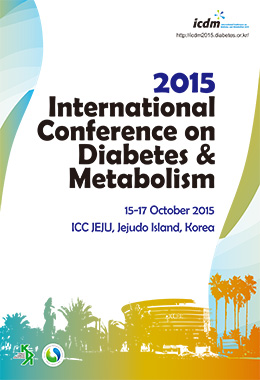Objective: We investigated the association between the estimated 24-H urinary sodium excretion (24hUNaE) and metabolic syndrome with nation-wide population data.
Methods: A total of 17,541 individuals (weighted n = 33,200,054; weighted men%, 52.5 [95% CI, 51.8-53.3]%; weighted age, 45.2 [44.7-45.7] years) who participated in the Korean Health and Nutrition Examination Survey 2009-2011, were investigated. NCEP-ATP III criteria for metabolic syndrome was used. Sodium intake was estimated by 24hUNaE using the Tanaka’s equation with spot urine sample.
Results: The weighted 24hUNaE was 3,964 (95% CI, 3885-4044) mg/day in men, and 4,736 (4654-4817) mg/day in women. The weighted age-adjusted prevalence of metabolic syndrome was increased along the quartiles of 24hUNaE in each sex (men, quartile 1, mean ± SEM, 22.5 ± 1.0%; quartile 2, 23.0 ± 1.0%; quartile 3, 26.0 ± 1.2%; quartile 4, 26.0 ± 1.2%, P = 0.026; women, quartile 1, mean ± SEM, 19.4 ± 0.8%; quartile 2, 17.7 ± 0.8%; quartile 3, 19.8 ± 1.0%; quartile 4, 23.0 ± 1.1%, P = 0.002). Even after adjustment for age, daily calories intake, heavy alcohol drinking, regular exercise, college graduation, and anti-hypertensive medication, the weighted prevalence of metabolic syndrome was increased with the increases of 24hUNaE in each sex. There was a graded association of the weighted 24hUNaE with the number of metabolic syndrome component after adjustment in each sex. In participants without anti-hypertensive medication, the odds ratio for metabolic syndrome in the quartile 4 of 24hUNaE with the quartile 1 as a control was 1.56 (95% CI, 1.33-1.84, P < 0.001) in total population, 1.66 (1.34-2.06, P < 0.001) in men, and 1.94 (1.49-2.53, P < 0.001) in women, respectively.
Conclusion: In this nation-wide population study, we observed the significant independent association of high sodium intake, estimated by spot urine sodium excretion, with the presence of metabolic syndrome in each sex.




